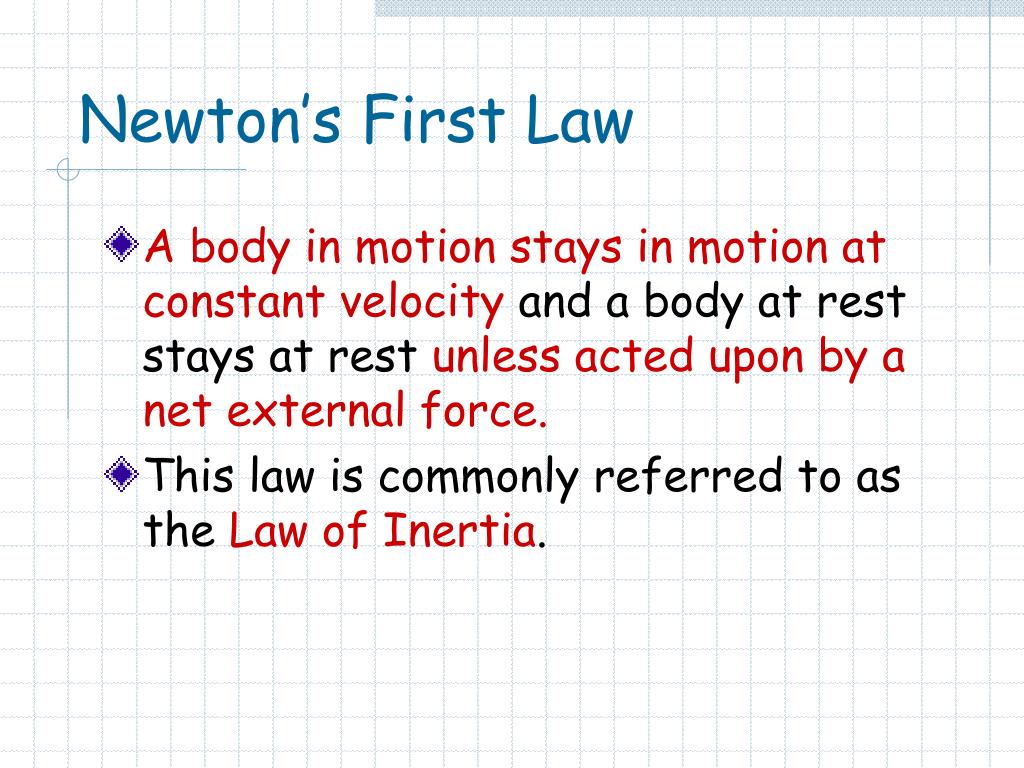

Newton was both inspired and irritated by Descartes’ writing and, it is argued, his inclusion of the word Principia in the title of his texts was a jibe at Descartes’ use of the term. Place, it will never depart from that place unless others chase it away Īnd if it has once begun to move, it will always continue with an equal Unless others divide it if it is round or square, it will never change thatįigure without others constraining it to do so if it is stopped in some This is to say, if the part has some size, it will never become smaller State unless collision with others constrains it to change that state. …each particular part of matter continues always to be in the same He is said to have taken the form of his law from Descartes’ first law of nature: While Galileo can be considered to have noted the three essential components of Newton’s first law, (constant speed motion in a straight line and the effect of an external force), he did not state a universal form of a law of inertia. A diagram suggests that Galileo assumed that the released body would travel at constant speed. Galileo’s comment can be interpreted to mean that a body released from circular motion will follow a tangent to the circle and a heavy body will begin dropping immediately.


A grave project, as soonĪs it is separated from the projicient, beginneth to decline. The project moveth by the Tangent of the circle of the motion The motion impressed by the projicient is onely in a right line. In the English translation of The Dialogue, Galileo wrote in the margin: Galileo’s comments may have influenced Newton’s development of the first law of motion.


 0 kommentar(er)
0 kommentar(er)
